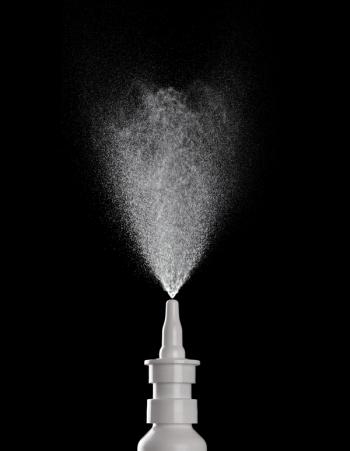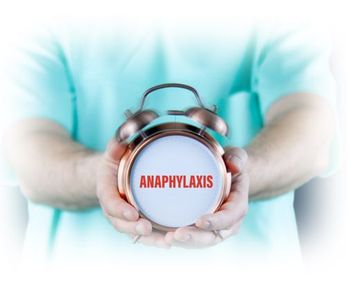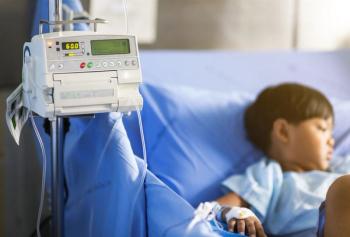
Autumn Aggravations: Allergy Quiz Round 2
How long does immunotherapy protect against allergy? How often is conjunctivitis seen alone? What is the meaning of the “September Epidemic”? Answers and more questions in round 2 of our quiz.
[[{"type":"media","view_mode":"media_crop","fid":"63224","attributes":{"alt":"","class":"media-image media-image-right","id":"media_crop_393855005934","media_crop_h":"0","media_crop_image_style":"-1","media_crop_instance":"8064","media_crop_rotate":"0","media_crop_scale_h":"0","media_crop_scale_w":"0","media_crop_w":"0","media_crop_x":"0","media_crop_y":"0","style":"height: 151px; width: 265px; float: right;","title":"","typeof":"foaf:Image"}}]]If your waiting room isn't already filled with the sights and sounds of allergy season, it will be in the weeks to come. For a short break from all things allergy, try our Autumn Aggravations Quiz: How long does immunotherapy protect against allergy? How often is conjunctivitis seen alone? What is the meaning of the “September Epidemic”? Questions and answers with short discussions follow; resources available at the end.
Question 1:
Answer and discussion on next page »
Answer: D. All of the above
Intranasal antihistamines like azelastine (Astelin) can be used as first-line treatment for SAR, but are generally less effective than intranasal corticosteroids. Intranasal corticosteroids like fluticasone propionate (Flonase) are the most effective treatment for mild-to-moderate persistent allergic rhinitis. Studies show that intranasal corticosteroids are more effective in treating SAR than antihistamines and leukotriene antagonists taken in combination.1 Dymista is a new class of medication approved in the US in 2012 for the treatment of moderate to severe perennial or SAR in patients with inadequate response to intranasal antihistamines or corticosteroids. Dymista is an intranasal formulation that combines azelastine hydrochloride and fluticasone propionate. Clinical trials have suggested that Dymista may be particularly effective in relieving nasal congestion vs either azelastine or fluticasone alone.2
Please click here for next question »
Question 2:
Answer and discussion on next page »
Answer: D. 12 years
Research shows that, by modifying the underlying disease process, allergy immunotherapy (AIT) may be effective for up to 12 years. AIT may also decrease the development of new sensitizations and asthma in patients with established allergic rhinitis.1 Clinical trials suggest that both subcutaneous (SCIT) and sublingual immunotherapy (SLIT) are effective in treating allergic rhinitis. SLIT can be given as drops or tablets and may be safer and more convenient than SCIT, particularly in children. The risk for serious adverse reactions to SCIT may be higher during peak pollen seasons.3
Please click here for next question »
Question 3:
Answer and discussion on next page »
Answer: C. Both are effective
Clinical trials have demonstrated that both continuous (year-round) and discontinuous (given before and/or during the allergy season) SLIT regimens are effective in treating allergic rhinitis. Discontinuous regimens may have advantages in terms of cost and compliance. Continuous regimens have been linked to poor compliance and hence lower effectiveness. The optimal duration of treatment for discontinuous regimens appears to be four months; optimal dosing frequency is daily; and the optimal number of treatment seasons is at least three. The only discontinuous SLIT tablet that has shown short-term, sustained and post-treatment efficacy is the 300 IR (index of reactivity) five-grass-pollen formulation.3
Please click here for next question »
Question 4:
Answer and discussion on next page »
Answer: D. 30%
According to a recent review,4 up to 30% of the general population has allergic conjunctivitis without concomitant rhinitis. Between 30% and 71% of patients with allergic rhinitis also have allergic conjunctivitis. The most common cause of allergic conjunctivitis is seasonal allergies. The majority of patients have a few episodes of mild, intermittent conjunctivitis annually. About 30% of patients have more frequent or persistent episodes with intense symptoms.4
Please click here for next question »
Question 5:
Answer and discussion on next page »
Answer: E. All of the above
Surface lubricating agents like saline and artificial tears can help remove irritating allergens from the ocular surface. Some artificial tears also provide lubrication or combine viscosity agents with saline solution, which may help reduce symptoms. Ointments and time-released tear replacements used at bedtime may provide longer lasting relief.5 A recent study suggested that cold compresses and artificial tears provided significantly better relief than no treatment at all, and that cold compresses combined with epinastine hydrochloride enhanced the effect of epinastine alone.6 Because nonpharmacologic treatments do not target the underlying disease or inflammation, their use may be best suited to mild allergic conjunctivitis. Pharmaceutical options include topical decongestants, antihistamines, mast cell stabilizers, nonsteroidal anti-inflammatory drugs, and corticosteroids.5
Please click here for next question »
Question 6:
Answer and discussion on next page »
Answer: A. True
According to 2010 guidelines developed by Allergic Rhinitis and its Impact on Asthma (ARIA),7 patients with allergic rhinitis should be checked for asthma at diagnosis, especially if they have severe or persistent allergic rhinitis. Between 10% and 40% of patients with allergic rhinitis have asthma, and most patients with asthma have allergic rhinitis. Asthma may be more common in patients with moderate-to-severe persistent allergic rhinitis. In adulthood, the development of asthma is sometimes independent of rhinitis. In childhood, the development of asthma is often associated with allergy.7
Please click here for last question »
Question 7:
Answer on next page »
Answer: A. Asthma
“September Epidemic” has come to refer to fall exacerbations of asthma, particularly among school-aged children. Asthma exacerbations in children are lowest in the summer and highest in the fall. In fact, one-quarter of children hospitalized for an asthma attack are admitted in September.8 Increased rates of rhinovirus respiratory infections when children return to school may play a role. Seasonal exposure to environmental allergens, both outdoors and in school structures, may also be involved. In a recent retrospective analysis of the Inner-City Asthma Consortium: the Asthma Control Evaluation study and the Inner City Anti-IgE Therapy for Asthma study, asthma exacerbations in children were most common in the fall when 28.8% of participants experienced an attack.9
In case you missed it, try the Allergy Aptitude Test: Round 1
And, watch for a link to the Autumn Allergy Challenge: Round 3 in an upcoming email.
References:
1. Wallace DV, Dykewicz MS, Bernstein DI, et al. The diagnosis and management of rhinitis: an updated practice parameter. J Allergy Clin Immunol. 2008;122(2 Suppl):S1-84. doi: 10.1016/j.jaci.2008.06.003.
2. Rossi O, Massaro I, Caminati M, et al. Escaping the trap of allergic rhinitis. Clin Mol Allergy. 2015;13:17. doi: 10.1186/s12948-015-0023-y. eCollection 2015.
3. Demoly P, Calderon MA, Casale TB, et al. The value of pre- and co-seasonal sublingual immunotherapy in pollen-induced allergic rhinoconjunctivitis. Clin Transl Allergy. 20154;5:18. doi: 10.1186/s13601-015-0061-z. eCollection 2015.
4. Leonardi A, Castegnaro A, Valerio AL, et al. Epidemiology of allergic conjunctivitis: clinical appearance and treatment patterns in a population-based study. Curr Opin Allergy Clin Immunol. 2015;15:482-488. doi: 10.1097/ACI.0000000000000204.
5. Bielory BP, Perez VL, Bielory L. Treatment of seasonal allergic conjunctivitis with ophthalmic corticosteroids: in search of the perfect ocular corticosteroids in the treatment of allergic conjunctivitis. Curr Opin Allergy Clin Immunol. 2010;10:469-477.
6. Bilkhu PS, Wolffsohn JS, Naroo SA, et al. Effectiveness of nonpharmacologic treatments for acute seasonal allergic conjunctivitis. Ophthalmology. 2014;121:72-8. doi: 10.1016/j.ophtha.2013.08.007. Epub 2013 Sep 23.
7. Bousquet J, Schünemann HJ, Samolinski B, et al for World Health Organization Collaborating Center for Asthma and Rhinitis. Allergic Rhinitis and its Impact on Asthma (ARIA): achievements in 10 years and future needs. J Allergy Clin Immunol. 2012;130:1049-1062. doi: 10.1016/j.jaci.2012.07.053. Epub 2012 Oct 4.
8. National Jewish Health. Back to school brings "September Epidemic" into play for asthmatic children.
9. Teach SJ, Gergen PJ, Szefler SJ, et al. Seasonal risk factors for asthma exacerbations among inner-city children. J Allergy Clin Immunol. 2015;135:1465-1473.e5. doi: 10.1016/j.jaci.2014.12.1942. Epub 2015 Mar 18.
Newsletter
Enhance your clinical practice with the Patient Care newsletter, offering the latest evidence-based guidelines, diagnostic insights, and treatment strategies for primary care physicians.



















































































































































































































































































